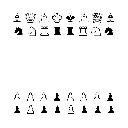ueen
 merde alors @ merde @sh.itjust.works Posts 420Comments 3,066Joined 2 yr. ago
merde alors @ merde @sh.itjust.works Posts 420Comments 3,066Joined 2 yr. ago

merde alors @ merde @sh.itjust.works
Posts
420
Comments
3,066
Joined
2 yr. ago
Short Sword (Yatagan) from the Court of Süleyman the Magnificent (reigned 1520–66)







when you call anything that's ai generated "ai slop", ai slop doesn't mean anything.
you may disapprove aigen. In which case you should express your opinion in a more appropriate manner.